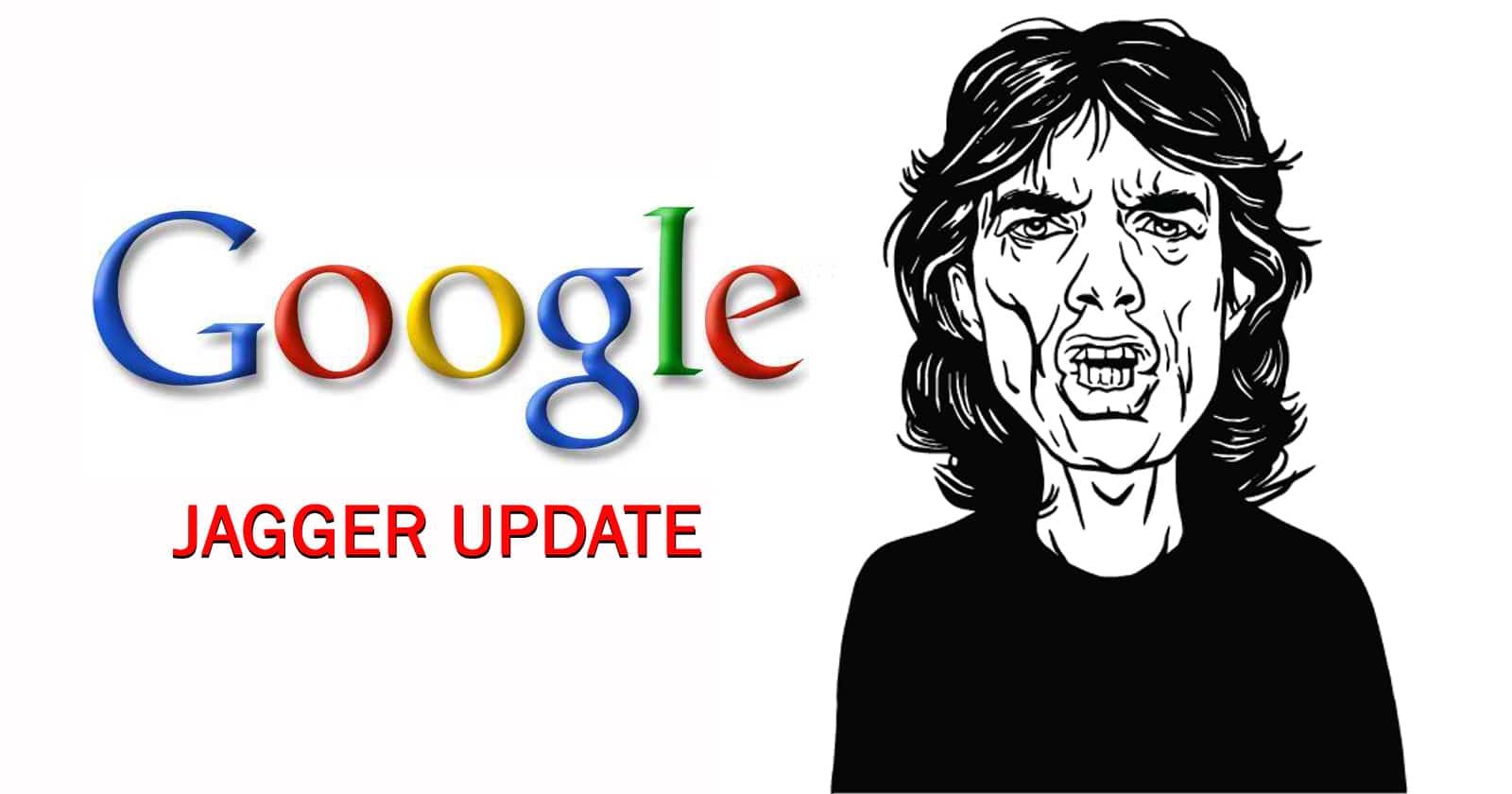In 2005 Google launched a series of algorithm updates, which became known as the Jagger Update, named like many others by Brett Tabke of WebmasterWorld.
The Stones are playing Vegas [ticketmaster.com] the week of PubCon and Matt Cutts was recently called the Mick Jagger of search [usatoday.com]. – Brett Tabke, via WebmasterWorld, 9:48 pm on Oct 18, 2005
Like most major Google algorithm updates, Jagger rolled out over a number of weeks and data suggests that it started in early September, with Google updating it’s publicly available information in mid-October in how it perceives links being directed to a specific website.
Before Jagger, the last major algorithm update was the 2003 Florida update, so as you can imagine another large update got the entire SEO community buzzing, on various forums and blogs.
Jagger Update Timeline
Jagger began with a number of backlink-focused updates in September 2005, and these continued into October 2005. This coincided with an updated of the public facing Google PageRank database, which in itself was a noteworthy event.
Even though the modern day PageRank is no longer externally available (after Google last updated the public PageRank toolbar in December 2013, and at the same time said they probably weren’t going to update it again).
The second and third parts of the Jagger update lasted until November 2005.
The Impact of Jagger
With the Jagger Update, Google altered it’s algorithm in a number of ways, mainly affecting a website’s backlink profile, content size, and refresh rate, as well as a number of other technical factors.
Content
Jagger negatively impacted websites with duplicate content across multiple domains. Following the third installment of the update webmasters also reported that they had seen issues with internal duplication and how canonicals were being handled.
Webmasters whose websites resolve both with and without a trailing slash, or had a “clean” version and one ending in /index.html (or similar) began to see duplication issues.
Websites with a large number of doorway pages also saw an impact.
Backlink Spam
With this update, Google took a new approach to how they weighted and understood links pointing to a website, taking into account the anchor text of inbound links, the page content of the inbound link, and the speed/velocity of inbound links coming to the website.
Predictable link building patterns began to emerge through monthly SEO service packages, and to an extent, this is still in practice today. This typically manifests in links appearing toward the end of the month.
Jagger also negatively affected websites buying sitewide links, engaging in reciprocal link exchanges with irrelevant websites, and acquiring links from link farms.
Hidden Text, Redirects & Cloaking
It wasn’t just content spinners and backlink spammers who were negatively impacted by Jagger, those utilizing technical tricks of the day also felt the pinch.
In 2005, using cloaking as a method to show one piece of content to search engines and another to users was fast becoming a favorite tactic of spammers. Jagger targeted websites using CSS unnaturally (and irrationally), and websites using delayed meta redirects to cloak and deceive search engines/users saw the biggest hit.
Webmasters using CSS to hide text (and keywords) also saw negative ranking movements following Jagger.
Jagger’s Reception
Jagger caused a mixed reaction across the many forums and SEO blogs, with webmasters seeing varying results across multiple SERPs, along with the usual “Google is bad, Google is evil” brigade.
Two of the major themes of the fallout of the updates were around the domain age, and Google wanting to increase the amount of money being spent on AdWords.
Google Favors Older Sites
Google favoring older websites, or bigger brands, has always been and always will be a popular go to for a number of webmasters, and the Jagger update brought about more comments along the same lines.
The age dial has been turned to high on the other set. Its age over authority, age over content where as 66.102.7.104 has a reasonable balance. “RichTC”, WebmasterWorld forum, November 5th 2005
Coincidentally Google also filed a patent in 2005 that stated:
“Valuable (legitimate) domains are often paid for several years in advance, while doorway (illegitimate) domains rarely are used for more than a year. Therefore, the date when a domain expires in the future can be used as a factor in predicting the legitimacy of a domain”.
The importance of this factor was however downplayed by Matt Cutts in 2010, and by other SEO professionals down the years (such as this piece by Ann Smarty in 2008). That being said, whenever a new Google update is rolled out, there is often a period of fluctuation as document histories are crawled and weighed again under the new algorithm settings.
Christmas PPC Boost
As we know from history, Google tends to release major algorithmic updates toward the end of the year/during fall. Look no further than the Florida Update, which did a lot of damage to retailers when it was released in November 2003.
However, back in 2005, this trend was still new, and a lot of webmasters took to forums with claims that by rolling out these major updates at this time of the year, a lot of websites lost ranking positions ahead of a busy and potentially lucrative holiday season.
In order to recover this lost traffic, sites would need to utilize paid search campaigns. This then worked in Google’s benefit to increase revenue at that time of year.
It’s also worth mentioning that back in 2005, a lot of SEO practitioners still saw MSN as a viable search engine alternative.
That’s more like what g__le will say, MSN clearly has them beat and will capitalize on this whole situation, MSN has been providing some serious traffic for us to the point where who cares about g__gle? Webmaster Forum, October 18th 2005
Recovering From Jagger
As Jagger was a broad stroke update affecting multiple variables, recovery wasn’t always straightforward as fixing a few things onsite (and offsite).
Reading through a number of forum posts and blogs, the main recoveries reported were down to:
- Removing duplication from meta titles, and making them more concise making them more focused on the page and its content.
- Improving website and URL architecture.
- Removing excessive internal links (excessive sitewide footer links).
- Resolving duplication issues resulting from non-www. and www, trailing slash and non-trailing slash, and URL appendages such as /index.html.
- Writing unique content for products and services, rather than using vendor and manufacturer-provided content.
- Removing low-quality backlinks, links originating from link farms and paid links.
While a lot of these fixes might seem logical in the modern day, the internet (and search engine landscape) has evolved a lot over the years since Jagger. In 2005, Google only held ~37 percent of the US market and faced stiff competition from Yahoo (~31 percent) and MSN (~15 percent).
Jagger’s Legacy
Jagger, being one of the earlier Google updates really helped pave the way for what we consider to be SEO best practices, as well as further algorithm updates.
In many ways, because of the heavy focus on unnatural link building and paid links, Jagger could be seen as a precursor to other backlink algorithms that eventually became the entity known as the Penguin algorithm.
More Google Jagger Resources:
- Google Jagger Update is Official
- Google Updates Jagger 2 & Jagger 3 On The Way
- Google Jagger 3 Update
- Google’s Jagger Update Completing Cycles
Featured Image Credit: Paulo Bobita




